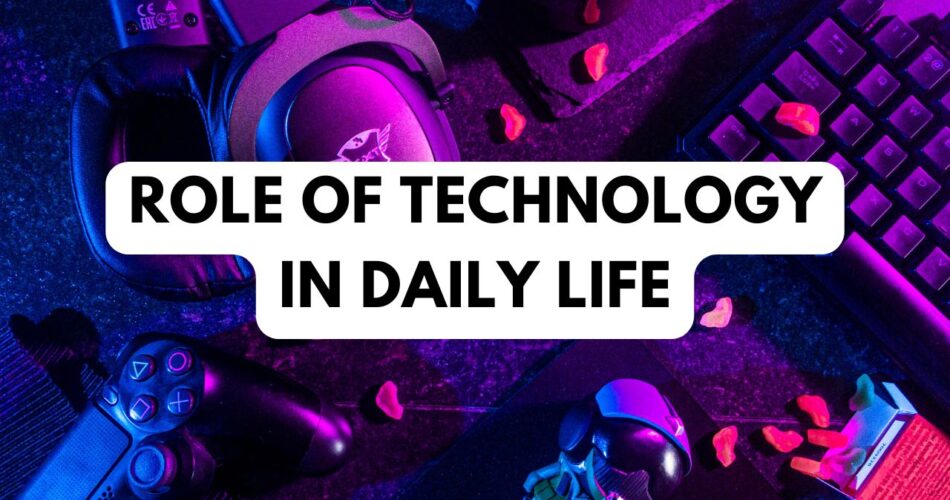Introduction
Imagine a day without your smartphone, the internet, or any gadgets—life would feel completely different, right? Technology has become such an important part of our everyday routine that we hardly notice how much we rely on it. From setting morning alarms to staying connected with friends, ordering food, or working remotely, technology touches almost every aspect of our lives. In this article, we’ll explore how technology shapes our day-to-day activities and the ways it continues to improve and simplify life.
Role of Technology in Everyday Life
1. Communication
Technology has revolutionized the way we connect with others. Today, smartphones, emails, and social media allow instant communication, no matter the distance.
- Impact: People can stay in touch with friends and family across the globe through WhatsApp or FaceTime. Businesses also benefit from tools like Zoom and Microsoft Teams, enabling remote meetings and collaborations, check out The Impact of Technology on Modern Communication.
- Example: During the COVID-19 pandemic, video calls became essential for both personal and professional interactions.
2. Education
Technology has transformed learning, making education more accessible and interactive. Online platforms and digital tools support both students and teachers, check out Roles of Technology in Education
- Impact: E-learning platforms like Coursera and Khan Academy allow students to learn new skills from anywhere, while schools use tools like Google Classroom to assign tasks and monitor progress.
- Example: Many students now attend virtual classes and submit assignments online, ensuring uninterrupted learning even during lockdowns.
3. Entertainment
From streaming movies to playing games, technology offers endless entertainment options. Platforms like YouTube, Netflix, and Spotify provide on-demand access to content. check out Impact of Technology on Entertainment Industry
- Impact: Entertainment is now personalized, allowing users to watch or listen to their favorite content whenever they want. It has also opened new opportunities for content creators.
- Example: Instead of waiting for TV shows to air, people can binge-watch entire seasons on Netflix or play online multiplayer games with friends on platforms like PlayStation Network.
4. Healthcare
Technology has greatly improved healthcare services, making it easier for people to access medical advice and treatments.
- Impact: Telemedicine apps allow patients to consult doctors remotely, and wearable devices help monitor health in real-time. Hospitals use advanced tools for diagnosis and surgeries.
- Example: Apps like Practo and Apple Watch help individuals track their health and consult professionals without visiting clinics physically.
You may also like – The Impact of AI in Healthcare – Revolutionizing Patient Care
5. Work
Technology has reshaped workplaces, allowing remote work and automating repetitive tasks. Employees can collaborate efficiently, and companies can streamline operations.
- Impact: With the help of tools like Slack and Trello, teams can manage projects remotely, while automation software reduces manual workloads.
- Example: Many companies adopted work-from-home policies using tools like Zoom and Google Drive, ensuring business continuity during the pandemic.
Conclusion
Technology plays an essential role in our everyday lives, influencing the way we communicate, learn, work, entertain, and care for our health. It offers convenience, improves efficiency, and brings people closer, regardless of distance. However, it also comes with challenges, such as privacy concerns and overreliance. As technology continues to evolve, it’s important to use it responsibly and adapt to new innovations that can further enhance our quality of life. To explore specific areas like communication, education, or healthcare, check out the related articles linked above.
FAQ’s
What is the role of technology in daily life?
Technology includes the tools and systems people create to solve problems and make life easier. It covers everything from smartphones and computers to cars and medical devices. Technology helps us stay connected, learn, work, travel, and stay healthy. Think of your smartphone—it lets you talk to others, find information, and even track your fitness. Simply put, technology makes everyday life smoother and more convenient.
What is the role of it in everyday life?
We rely on technology daily for communication, online banking, social media, investments, research, and more. It simplifies tasks, keeps us connected, and helps us manage our personal and professional lives. For businesses, technology is essential to stay competitive—without reliable IT systems, companies struggle to operate efficiently and meet modern demands.
How has technology changed our life?
Technology has transformed our lives by improving productivity and access to essential services like energy, clean water, and sanitation. It has made communication easier through phones and the Internet, enabling global collaboration. Advances in transportation, healthcare, and education have further enhanced living standards, impacting billions of people worldwide.

